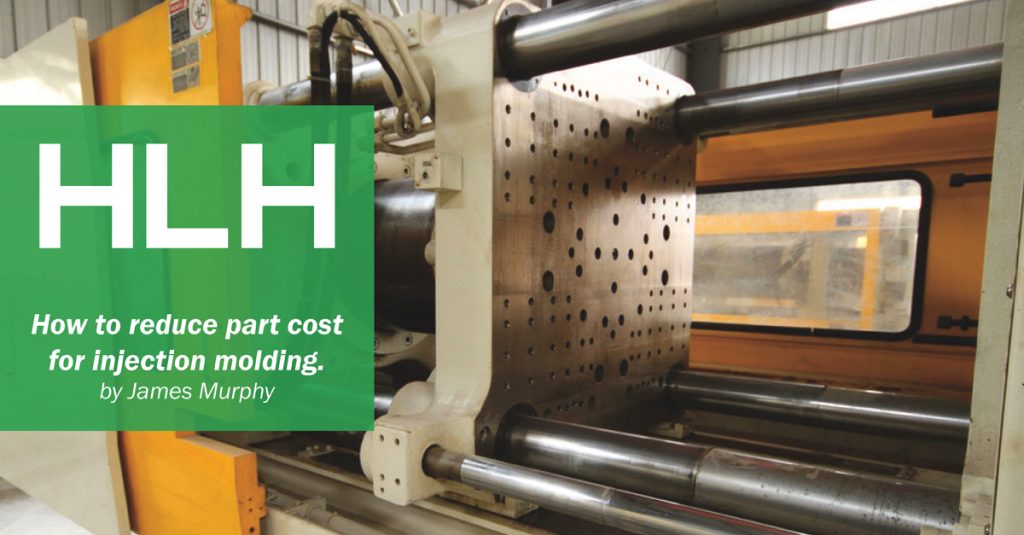How to reduce part cost for injection molding.

Here I am talking about making the final part cheaper, not the tool or mould they come from, which is covered in another article. Basically, the cost of an injection moulding is made up of;
-Â Â Â Â Â Â Â Â Â Material cost
-Â Â Â Â Â Â Â Â Â Surface finish
-Â Â Â Â Â Â Â Â Â Cycle time or machine time
-Â Â Â Â Â Â Â Â Â Quantity
-Â Â Â Â Â Â Â Â Â And extra work or components
The material obviously is a major dictator of cost. Both the type and the amount. There are thousands of different choices and selecting the right one for your product is a science in itself. Costs of materials vary massively so selecting the right one is key. To make the right choice, you need to understand where and how your part will be used. Does it need to be heat resistant? Flame retardant? Have high impact strength? or just look shiny? Once you know what the part needs to do you will be able to lock down a suitable plastic for it, and if you are not sure you can always ask me. Some materials are quite cheap and some are really expensive so making sure you get the one with the right mix of cost vs performance is key.
Although strictly speaking the surface finish of the part is going to impact the cost of the mould tool rather than the part itself, certain surface finishes can have an impact on part cost too. Generally, high gloss finishes, brilliant white or transparent parts will require much greater care during the setup, the handling of materials and processing and this is going to be reflected in your part price. These types of finish are easier to get wrong or damaged and this risk is going to drive the part cost up. If you can work with a matte finish you are going to get a cheaper part.
Cycle time includes setup and running time for each part, this is where the manufacturer’s overheads are. The longer each part takes to make the more expensive it is for the supplier to produce and the more it will cost you. Cycle time is dictated by the tool design, the type of material and the complexity of the part and therefore the tool. Some materials cool very quickly others take a while. Some tools require and are designed with cooling others aren’t. Complex parts require more complex tools and may take longer to demold. Prototype tools often have manually removed inserts for undercuts. I have seen some big automotive parts take 30 minutes each to mold just because the operator had to spend 20 minutes removing inserts from the part and putting them back in the tool every time. The same is true of some parts and there may be occasions where the part needs to be held in the mould even longer to reduce warping for example. So picking the right material and the right company to build your tools is key. The key here is to reduce complexity as far as possible.
Learn more about HLH’s Prototyping, Machining and Rapid Injection Molding here.
Quantity probably doesn’t need much of an explanation. The more you make the cheaper each individual one will be, simple.
Any extra work or components will drive up the cost of your part. Any post process machining or finishing is obviously going to increase costs, so if it can be done in the tool you should work with your supplier to try and achieve it that way.
The easier you make your part to manufacture the cheaper it will be to do so. This needs to start from the very first day of the design process. It is becoming the norm for multifunctional teams to work on a new part design each contributing their expertise or experience to ensure the part or product is functional, looks good and easy to manufacture. If you don’t have access to the resources or expertise in-house you can work with your supplier or a consultant. The time and money spent at this stage will repay itself tenfold when you reach production.
So to summarise
- stick to readily available, easy to process material like PP, PC or ABS as far as possible
- Only request high standard surface finishes where necessary
- avoid unnecessary undercuts and keep the part as simple as possible
- make more
- again keep the part simple to avoid post process work
James Murphy


